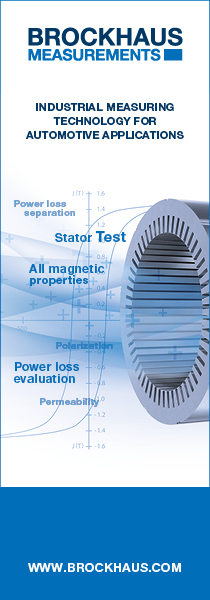Updated 02/09/16 ERD 24/08/16
Magnetics play a fundamental and important role in virtually all aspects of our daily lives, and many of us remain unaware of the breadth of the role these devices play in making our environment safer, cleaner and more energy efficient. As new technologies are developed, they quickly become the norm, especially in core application areas.
The seminar will bring together speakers from leading industry and academic groups to explore the latest developments, applications and trends in the design and development of magnetic devices that help reduce the carbon footprint of their modern day equivalents. Devices include electrical machines and generators, and their associated technologies, such as materials and computer systems. Although the applications will be varied, the common theme is how designers are making them “greener”.
This seminar will take place over two days at the new GreEn-ER facility of the Université de Grenoble and Grenoble INP, starting at lunchtime on the 21st September, with the talks finishing after lunch on the 22nd September. A small suppliers exhibition will take place during the networking breaks in the programme.
An informal dinner sponsored by Altair / CEDRAT will be available on the evening of the 21st, at a restaurant in Grenoble.
Following the talks there will be a tour of the CEA Tech laboratory which makes moulded magnets providing appropriate forms for different applications while reducing the use of RE without sacrificing performance. The tour requires security clearance – to take part, please complete a CEA form and return it to astewart@ukmagsoc.org with a copy of an ID card or passport by the 22nd August.
All times below are approximate at the moment.
Sponsors
Neodymium Level:
Accomodation
We have arranged a rate of 104.88€ (breakfast and city tax included) with the IBIS Grenoble Gare, 27 Quai Claude Bernard, 38000 Grenoble (here on Google Maps). If you email h2737@accor.com addressed to Julien and mentioning CEDRAT, you will be able to book using this rate.
Travel Information
The best option to travel to this conference is to fly to Lyon and then take the bus or train to Grenoble (direct flights UK to Grenoble only operate during the ski season).
Travelling via London gives the most options, but Birmingham, Manchester, and Edinburgh also have regular flights.
Lyon airport is approx 100km from Grenoble. There is a regular bus between the two (at least once an hour, 36 Euros return, 60 minute journey). The bus stop is outside terminal 1. The bus timetable can be seen here: http://www.lyonaeroports.com/en/access-transports/shuttle-buses/grenoble. There are also trains direct to Grenoble city centre from Lyon airport; details here: http://www.lyonaeroports.com/en/access-transports/by-train
Coupled Multi-Physical Electromagnetic-Thermal-Mechanical Model of the ITER Toroidal Field Coils Magnet System
by Gabriele D’Amico of Fusion 4 Energy (F4E)
The ITER magnet system will be the largest and most integrated superconducting magnet system ever built. It will be a key system in ITER since it will create the magnetic "cage" needed to confine the plasma and to prevent the particles from escaping and thus keeping the plasma "stable". Ten thousand tonnes of magnets, with a combined stored magnetic energy of 51 GJ, will produce the magnetic fields (≈ 11.8 T) that will initiate, confine, shape and control the ITER plasma.
Manufactured from Nb3Sn or Nb-Ti), the magnets will become superconducting when cooled with supercritical helium in the range of 4 K. In conjunction with the poloidal field coils and the central solenoid, Eighteen "D"-shaped toroidal field magnets placed around the vacuum vessel will produce the required field.
Weighing 310 tonnes each, and measuring 9 x 17 m, they will be among the largest components of the ITER machine. During operation each coil will be subjected to net force in the order of 400 MN making the design and the prediction of the system behaviour fundamental to succeed in operating the machine.
In this talk a description of a numerical Finite Element (FE) model representing the entire ITER Toroidal Field (TF) coil system (18 coils) will be discussed.
The model, which is a coupled electromagnetic-thermal-mechanical model, is capable of computing the magnetic fields produced by the set of superconducting coils and the consequent electromagnetic forces acting on the magnet system, which are the result of the interaction between electrical currents and the magnetic field. Once the magnetic forces acting on the system are calculated, the model is able to simulate how the magnet system will behave during operation when the TF coil system will be cooled at the cryogenic temperature of 4 K and energised. In short, this model simulates how the TF coil system will function during the operation of the ITER machine.
Smaller. Faster, Greener – High Speed Electrical Machines
by Gerhard Martinek of Arnold Magnetic Technologies
The world is demanding greener machines to make more efficient use of energy. Engineers could concentrate on the efficiency of any one machine, but surely it would be better to optimise the complete system, including reducing the size, weight and energy consumption of the electrical machine. Our goal therefore will be to achieve highest possible torque density, and to become more efficient by spinning faster. Our study starts looking at the heart of the machine, to reduce it’s size, to “focus” it’s energy, to enable it to run faster, to run hotter, and consequently to enable the rest of the machine (stator, casing etc.) to shrink with the rotor.
As a manufacturer of permanent magnets, you would expect Arnold to concentrate on developing new, more capable magnet materials. But this is only part of our role in this efficiency drive - arrangement of the magnets, control of their fields, development of containment systems to resist the higher centrifugal forces that will result from the higher speeds of the rotor, lamination of materials to minimise losses...all technologies in which Arnold specialize. If the heart is efficient, we are half way there.




